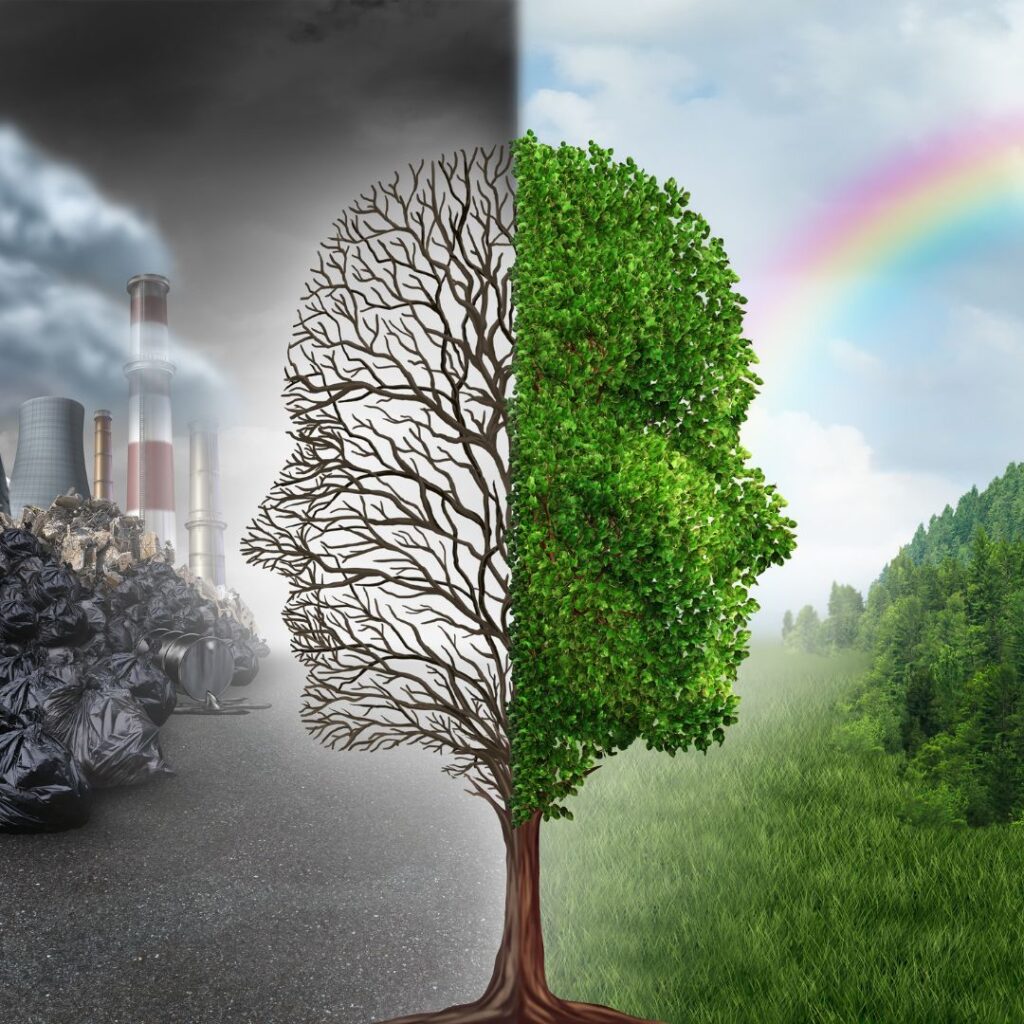In a rapidly evolving world where climate change reshapes nature, its impact unfolds before our eyes. From ice melting to devastating floods, there is an urgency to acknowledge the ongoing changes in our environment. The celebration of World Environment Day should be an important reminder to people that every action and decision holds immense power to bring positive change. Together, we have the ability to make a remarkable difference.
Environment, Pollution, Climate Change and Health.
World Environment Day aims to raise awareness and encourage global action to protect our system, playing a crucial role in highlighting the interconnectedness between the environment, climate change, and migration.
When we talk about the environment, we immediately think about pollution, which is a major issue affecting our planet, but it is not the only one. It can come from many sources, including industrial activities, transportation, and human behaviour. Air pollution – the world’s leading environmental cause of illness and premature death –, water pollution and soil pollution are all significant problems that affect people, plants, and animals alike. As a result, releasing harmful pollutants into the atmosphere causes and exacerbates climate change. Every year, nearly 6.4 million victims are caused by diseases linked to pollution, such as pneumonia, lung cancer, and chronic obstructive pulmonary disease. About 95% of these deaths occur in developing countries, generating an annual cost for the health system of around 8 trillion per year, which account for 6.1% of the global GDP (Gross Domestic Product).
Air pollution is linked to the loss of biodiversity and ecosystems, further exacerbating its impact. Additionally, it has an adverse impact on human capital, hampering productivity and overall well-being. In fact, as forecast by a recent World Bank study reducing air pollution leads to an increase in employment growth by 16% and a 33% in labour productivity growth rate.
Environment and Migration
Climate change is one of the defining challenges of our time, and within its effects, we include rising temperatures, sea-level rise, melting ice caps, and extreme weather events. Our Earth is currently experiencing a warming rate surpassing any previous recorded period. The accelerated temperature increase is causing significant alterations in weather patterns and disturbing the natural equilibrium. These changes present numerous hazards to both humans and the diverse forms of life on our planet and environmental factors can influence migration patterns. The degradation of natural resources, loss of agricultural productivity, increased frequency of extreme weather events – such as changes in rainfall that might lead to drought seasons or floods – and rising sea levels can make certain regions less habitable, leading to displacement. These events are closely connected and strengthen each other in influencing migration.
UNHCR estimates that over 145 million people have been displaced, in the past six years, approximately the 2% of the world’s population. To this number, due to environmental factors, an additional 250 million will be affected and forced to migrate over the next 35 years, becoming a phenomenon of catastrophic dimensions.
Studies indicate that environmental impacts primarily lead to internal migration or migration towards low- and middle-income countries, rather than cross-border migration towards high-income countries, and often short-distance, regional, and temporary.
In 2007 the International Organization for Migration (IOM) defined Environmental Migrants as “persons or groups of persons who, for compelling reasons of sudden or progressive changes in the environment that adversely affect their lives or living conditions, are obliged to leave their habitual homes, or choose to do so, either temporarily or permanently, and who move either within their country or abroad”.
We also want to shed light on a less obvious – and often overlooked – connection between migration and the global phenomenon of fast fashion. Every year, only the US throws away 11.3 million tons of garments, and much of this waste is exported to developing countries to be processed in giant landfills, where it causes environmental catastrophes and health crises in the surrounding areas. Fast fashion and its associated waste are triggering climate change and directly impacting vulnerable communities in developing nations.
Final thoughts
Addressing these issues requires global efforts to reduce greenhouse gas emissions, transition to clean and renewable energy sources, implement sustainable land-use practices, promote efficient resource management, and adopt environmentally friendly technologies. Additionally, policies and campaigns focused on climate change are crucial to address the issue across the population. MOAS, with this regard, is engaged in a social media campaign to spread awareness and create critical insight toward climate change. The campaign covers the key issues climate migrants face, including a lack of international protection mechanisms and no long-term collaborative plan to ensure people’s livelihoods are protected as the world sees the impacts of climate change.
Remember that we all are responsible for shaping our future through everyday choices and decisions.
To find out more about MOAS’ campaign, follow us on social media and subscribe to our newsletter to keep updated about our campaign and projects: https://moas.us11.list-manage.com/subscribe/post?u=d6bc6708edc59f5d737ddac41&id=ecfda43cc0.
Find out more about us and donate now to give us the possibility to continue our commitment to save lives. With us, you can make a difference: https://www.moas.eu/donate/.


